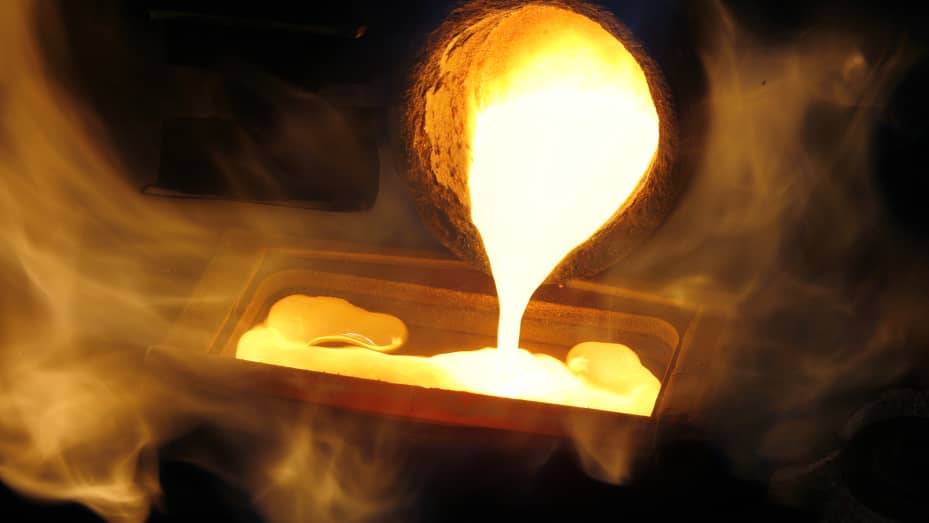When trying to figure out how to evaluate the value of your gold coins, bars, ingots, and other gold products the term “melt-value” will come up. This is not the only way to determine the value of the gold you want to sell. The melt-value isn’t the only way to measure the value of your gold but it is an important metric that every bullion dealer should be familiar with.
New bullion investors need to understand the “melt-value” and other terms used in the precious metal market to make informed decisions.
Anyone who is considering investing in gold or silver should keep in mind that like all assets, the price of precious metals goes up and down. Your gold can lose its value. You can avoid big losses by following the markets and knowing when you should liquidate or hold on to your gold.
The definition of the melt-value
The melt-value of gold is the value of the metal when it is melted down. It is different from the spot price because it is not affected by the same risks. For instance, for gold coins, the melt-value is not affected by the rarity of the coins, their provenance, or condition. All that matters is the amount of gold in the coin itself. Melting the coin will destroy the piece of gold which will negate all that goes into evaluating a numismatic or collectible gold coin. Bullion coins are different. They are made from the purest gold which means that their value will be closer to the spot price. You can calculate the melt-value of gold by multiplying the weight of the coin by the percentage of gold contained within it and the current value of gold per ounce.
What goes into calculating the value of gold
Gold Weight – Gold is sold by the troy-ounce which weighs 31.1 grams. This is 10-percent heavier than the standard avoirdupois ounce. Gold bullion bars, especially those produced by government mints have the weight and purity or fineness engraved on the surface.
Gold Purity – The purity of gold bullion is expressed as fineness. Gold jewellery, coins, etc. have a melt-value that is usually less than that of gold bullion which is often 99%. Since the spot price is quoted at $ per 1-ounce of pure gold, the value of an ounce of gold bullion is therefore expected to be close, if not the same, as the spot price of gold.
The Live Gold Price – You can go to Bloomberg, Financial Times any of the many reputable Precious metal publications and you will find the price of gold at a specific time. This price fluctuates a lot. If you are a long-term gold investor, the daily fluctuating spot price will not matter as much as the long-term changes.
Using the melt-value of Gold to Evaluate Investments
The melt-value is the least amount that gold can drop down to even if the gold loses its collectability due to the volatility of the market or damage. This is not a constant value. A bullion dealer may use the melt-value to base his offer on. It is an important value for bullion dealers. It distinguishes whether dealers are more interested in gold for the sake of gold or gold as an investment vehicle.
Sometimes the value of a gold coin will be higher than its melt-value. This is specifically true for numismatic coins whose value is affected by other factors like the global economic situation. It might be worthwhile to preserve the coins to protect their value. You may need the services of a qualified appraiser to determine the value of a non-collectible coin. Investing in gold requires a lot of time and effort. Keep in mind that the melt-value of gold coins is also different from the face value.
It can be difficult to determine the value of numismatic coins which is why a lot of investors buy bullion coins whose pricing is much more straightforward.

